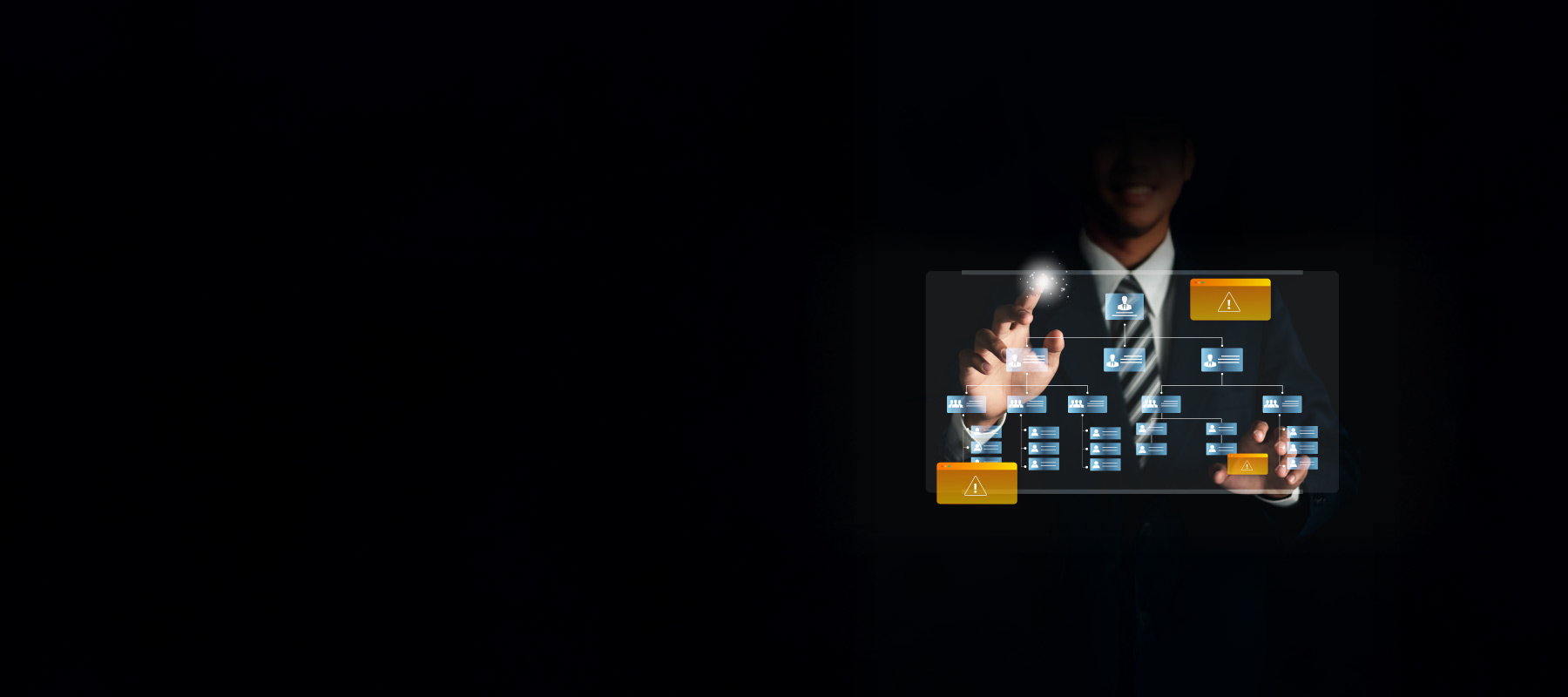Around 300 participants, including top management scholars, consultants and business leaders, attended a special conference for the Strategic Management Society, hosted by IMD and CERN, on identifying, analyzing and learning from outliers, and learning how to generate “Big Bang” innovations.
Outliers are overlooked in management research, and as a result of conventional thinking, most companies just end up looking like their competitors. No wonder the CFO of a Fortune 500 company once said, “Our strategy is a good one. We know it because everyone else [in our industry] has the same strategy.” Yet, disruptive innovators such as Apple, Google and Oticon are all outliers in their industries. They have capitalized on being different and have eventually re-shaped the future of the ecosystems in which they operate.
What is an outlier?
Academics would say an outlier is an observation that behaves unusually compared to the rest of the sample. There is no strict definition of an outlier, but some say that outliers are the result of pure luck and survivor bias; some claim that they are agile, driven and entrepreneurial; others argue that they are the product of more coherent managerial choices or innovative business models. What outliers have in common, though, is that they do things that mainstream competitors do not. Professor Liisa Välikangas distinguishes between two types of outliers – the “noises” and the “serendipitous outliers.” While the noises can be discarded once it has been proven that that is all they are, the serendipitous outliers often offer an opportunity to explore new strategic thinking. But the latter can be treated like the former if they are not appropriately handled, and valuable outliers may thus be inadvertently discarded. Academia urges us to pay more attention to and focus on successful outliers to understand the drivers, the processes and their impact and to find commonalities and build theories that could eventually help predict who the future successful outliers will be.
What drives a successful outlier?
Professor Robert Burgelman of Stanford University pointed out that the key strategic leadership challenge for companies is to design their strategy-making processes to effectively maintain a balance that maximizes both “fit” (i.e. it adapts to the current environment) and “evolvability” (i.e. it adapts to a changing environment and/or seeks out new viable environments). While fit and evolvability may sound contradictory, balancing the two is essentially fundamental to creating successful outliers.1 Professor Burgelman proposes that the process for achieving extraordinary performance, both individual and organizational, involves intelligence, resources and drive. He strongly argues for the further study of the processes that create and sustain the drive that characterizes successful outliers.
Why do we need to learn from outliers and how?
Inspired by the anti-cancer “mighty mouse” – an unusual mouse that is cancer resistant – discovered in the laboratory of a cancer research center in the US and the insights generated from the study of this incredible outlier, Professor Costas Markides gives seven reasons why we need to learn from outliers:
• To identify “holes” or “anomalies” in existing theories. For example, successful outliers could help companies understand how to compete with two business models simultaneously without creating a separate unit (which is the accepted theory).
• To identify new, emerging best practices by leading-edge companies that “break the rules” in their industries.
• To learn how to “beat the average.”
• To illustrate a new theory.
• To develop a new theory.
• To exploit a once-in-a-lifetime occurrence.
• To overcome collective inertia/paradigms.
However, we often fail to learn from outliers. Why? First, the academic publication system favors large sample studies. In fact, it is often difficult to get single-case studies published.
Second, Professor Markides asserted that lack of creativity prevents academics from taking a creativity jump from what the outlier is doing to truly understanding why it is doing it. It is what is hidden behind what the outlier is doing that is important.
Third, though outliers sometimes do receive attention, the way people study them is often wrong. Studies on successful outliers ignore the context and derive single-source success factors or unusual practices, which can lead companies to blindly imitate the idealized outliers, sometimes with high risks.
Professor Julian Birkinshaw identified four types of outliers or deviants: upstarts, born weird, dancing giants and other species.
| Upstarts | Born weird | Dancing giants | Other species |
| Atlassian, Twenty, Nixon McInnes, Happy Ltd. | WL Gore, Morning Star, Semco, Red Hat | P&G, ABB, HCL Technologies, IBM | CERN,AA,Sadler’s Wells,Shared Space |
These companies stood out because of their unusual practices and the success they achieved from following them. In the course of their evolution, some grew and changed and others got into trouble. In a performance-driven world, the interest surrounding a company drops dramatically if the company is no longer considered successful. Worse, the company’s previous achievements are discredited, as was the case with Oticon and ABB.
Professor Birkinshaw shared three ways to learn from outliers:
- Observe and apply. Theory and practice interact. Theories are insights and principles that are extracted from practice. A company can choose to observe and apply an outlier’s practice without adapting it to its current practices. This approach is straightforward but companies that adopt this strategy often struggle because the new practices do not fit with their current ones. Also, the outlier’s practices may only work in specific circumstances that do not always exist elsewhere.
- Focus on principles not practice. To avoid such a misfit, companies may consider what the principles are behind the outlier’s practices and then adapt variants of those principles according to their needs, thereby preserving the inspiration rather than trying to replicate the outlier’s exact practices. For example, GE’s famous “Work-out” was adopted by many companies, but in different forms: GoFast at GM, Cleanout at Unilever or the Centurion Program at Philips.
- Improve understanding of current practices. In some cases, outlier practices could also help improve current theory first, and then be applied to current practice. This “buffering” process also helps to address potential misfits. For example, Professor Birkinshaw explained how Topcoder’s innovative approach to software development has helped other software companies to better understand the strengths and weaknesses of their own model.
Outliers and examples of Big Bang innovation
According to Professor Henry Chesbrough, inventor of the term “open innovation,” Big Bang innovations are paradigm shifters and discontinuous by nature. Open innovation is defined as “the use of purposive inflows and outflows of knowledge to accelerate internal innovation and expand the markets for external use of innovation, respectively.”
CERN and the Atlas project demonstrate open innovation in science. Thousands of scientists and engineers worldwide were involved in working toward the same goal: finding the Higgs boson particle. CERN collaborates with nearly 200 off-site institutions in 38 countries. As John Seely Brown, co-chairman of Deloitte Center for the Edge said, “[It is] perhaps the most complex scientific experiment ever done by mankind.” An extremely decentralized and flat structure allowed an outstanding innovative culture to exist. The scientists are free to choose the subject of their research, and a published research paper is often the result of thousands of scientists collaborating. In March 2013 CERN confirmed the discovery of the Higgs boson particle, also known as the “God particle,” a milestone in the history of physics.
IMD Professor Bill Fischer examined how corporate culture drives innovation potential, explaining that corporate culture is not magic; it is the result of detailed choices that managers make within the organization. Innovative companies certainly do not necessarily all have the same culture, but their culture has to fit with their vision. He terms this the “organizational DNA” for innovation. Using Jay Galbraith’s star model, Professor Fischer presented the strategic fit of strategy, structure, process, rewards and people at Apple, Toyota, Sony and the Chinese home appliance company Haier – the world’s biggest white goods company. Big Bang innovation does not just spontaneously occur. It requires big dreams and careful attention to detailed managerial choices.
Professor Mahmood discussed frugal innovation, which involves reducing the complexity and cost of producing goods to the extreme so that they can be sold in developing and emerging markets. By doing more for less and serving broader markets, frugal innovation can help multinational corporations overcome the challenges of operating in lower income regions.3 For example, a $35 laptop was designed for use in India. Professor Yu talked about other forms of Big Bang innovation that could bring about change for millions of people in the world. Common Ground, an NGO based in New York that had a mission of creating affordable, supporting housing for homeless people, is a true outlier innovator, having renovated more than ten buildings in Manhattan over the last decade, converting them into hotels for homeless people. The process innovation and the vulnerability index that the organization developed along the way proved to be scalable in different cities across the United States and other countries such as Canada and Ireland.
Think outside the box
Managers are increasingly being encouraged to think outside the box and academics are striving to explore new research fields. Outliers are essential to accomplish this. Some advocate that non-experts are better at disruptive innovation because the experts are condemned to “myopic thinking.”5 While this statement is questionable, it has to be recognized that interdisciplinary thinking such as biomimicry is becoming the source of inspiration in many industries, and management practices that used to be industry- or geographic-specific are increasingly shared across boundaries in our globalized world. Outside-the-box thinking will produce successful outliers. The study of these successful outliers by academics will certainly lead to better methods and tools for practitioners to think outside the box. But to create this virtuous circle, academics and practitioners will have to join forces and tighten their collaboration.








